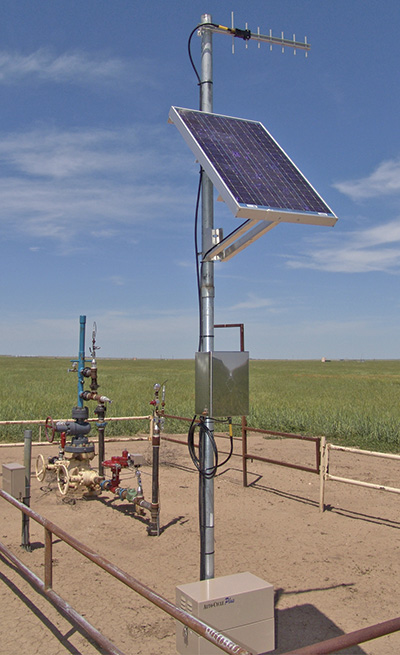As the months pass, the evidence is becoming increasingly clear—North America is in the midst of a golden age of oil and natural gas production. Record levels of recovery in U.S. unconventional plays and Canadian oil-sands formations are driving vast production increases. According to the International Energy Agency, the U.S. surpassed Saudi Arabia and Russia this year as the world’s largest producer of crude oil and natural gas. This historic rate of North American production requires recovery systems that can deliver the operational capability and reliability that producers demand. Producers have benefited greatly from exploration and recovery techniques—such as horizontal drilling, hydraulic fracturing and surface mining—that have become more fine-tuned and efficient when retrieving buried hydrocarbons. As a result, several complementary systems are used in the oilfield, and they must keep pace with the continuing technological advancements.
 North American oil and natural gas producers face many challenges. Arming their wellheads with rugged chemical injection pumps helps protect critical pumping components from damage and corrosion that could lead to failure, costly downtime and maintenance issues. (Images courtesy of Neptune Pump Co.)
North American oil and natural gas producers face many challenges. Arming their wellheads with rugged chemical injection pumps helps protect critical pumping components from damage and corrosion that could lead to failure, costly downtime and maintenance issues. (Images courtesy of Neptune Pump Co.)The Challenge
Unlocking shale formations and oil sands through horizontal drilling, hydraulic fracturing and steam-assisted gravity drainage initiates the oil and natural gas recovery process from producing zones beneath the surface. A single well may produce hydrocarbons for more than 20 years. During this production process, however, oil and gas operators face significant challenges. Water and sand entering the wellbore, corrosion of steel piping and harsh environmental operating conditions work against their efforts. Faced with a variety of production-hampering challenges, a resourceful industry has found that introducing specific chemicals into the wellbore can counteract many of the detrimental effects of the operating environment. Corrosion inhibitors enhance the life of the steel tubing that is used to move the oil and gas stream from the underground reservoir to the surface. Surfactants break the surface tension between the oil and water, allowing them to mix and move up the wellbore. In cold-weather environments, methanol is often used to lower the freezing point of liquid moving through surface transportation piping. Introducing production-enhancing chemicals is most commonly accomplished with a pump at the surface. This pump’s primary purpose is to consistently and accurately inject a user-selected type and volume of chemicals into the well, all without discharging harmful gases into the environment. Many may argue that the multiple variables in a well mean that the injected chemical volumes do not need to be consistent. However, astute operators know that a consistent, repeatable volume of chemical injected into the well enables a predictable outcome—including the monthly usage and cost of the chemicals injected; the corrosion rate of downhole steel tubing; and in some cases, even the volume of oil and gas produced. Equipment reliability and remote monitoring capabilities are additional critical requirements of chemical injection pumps, which often operate in remote locations. Pumps requiring frequent maintenance create unpredictable downhole problems that can cause a reduction in the injected chemical volume. Additional costs are incurred because technicians must be deployed to diagnose and resolve pump problems. To function at maximum efficiency, a chemical injection system must employ a pump that consistently injects an accurate chemical volume into the wellbore. Some operators may fear that the pump technology used for these applications falls short. These potential problems include:- Inconsistent injection rates
- Seal failures
- Chemical leakage
- Gaseous discharge to the environment
- Increased maintenance requirements
The Solution
Diaphragm metering pumps are highly durable and resistant to different chemicals. Therefore, they are an effective solution for oilfield chemical injection. Featuring few moving parts and no dynamic seals, diaphragm metering pumps are reliable and easy to maintain. The diaphragm completely separates the chemical side from the hydraulic-fluid side. Regardless of the chemical to be injected, the seal materials do not require changeout. On the hydraulic-fluid side, no O-rings are used in the pressurizing piston sleeve, which means less wear on the piston rod. The components that contact the injected chemical—such as the pump head and check valves—are stainless steel, and the diaphragm is constructed of a chemical-resistant polytetrafluoroethylene-coated diaphragm. This design helps extend pump life, prevent chemical leaks and reduce the cost of maintenance. A top monthly operational expense incurred by many oil and gas producers is the cost of chemicals for injection into the wellbore. Frequently, chemical injection pumps will be set at a higher dosing rate than required for the well. This practice counteracts inherent or perceived pump inefficiencies. Diaphragm metering pumps address this concern by consistently injecting user-selected chemical volumes into the wellbore with extreme accuracy..jpg) Some solar-powered diaphragm metering pumps have proven accurate, consistent, durable and reliable for injecting corrosion inhibitors and production-enhancing chemicals into a wellbore. Their solar-power capability reduces the need for on-site maintenance and costly trips to the well site by technicians.
Some solar-powered diaphragm metering pumps have proven accurate, consistent, durable and reliable for injecting corrosion inhibitors and production-enhancing chemicals into a wellbore. Their solar-power capability reduces the need for on-site maintenance and costly trips to the well site by technicians.Conclusion
The solar-powered diaphragm chemical-injection system offers benefits previously unavailable to unconventional oil and gas producers:- Environmentally friendly, emitting no atmospheric gases
- Sealless, low-maintenance diaphragm metering pump technology
- Consistent injection of accurate user-selected chemical volumes, enabling less chemical consumption, lower costs and predictable downhole benefits

